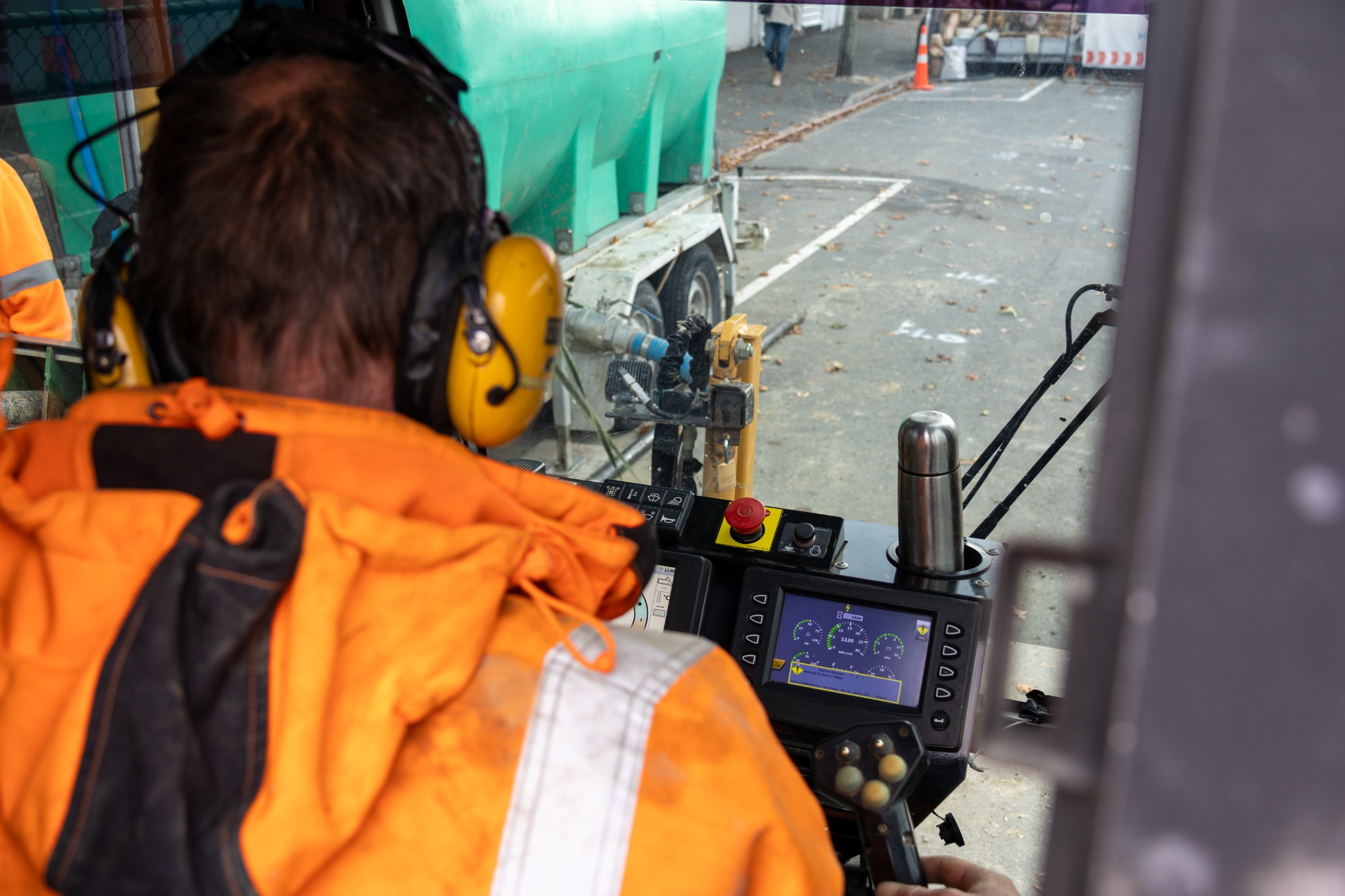The right tool for the right job
7 July 2025
Nelson City Council is in the process of laying almost a kilometre of underground pipes along Halifax Street and Collingwood Street as part of the Bridge To Better project.
Once completed, the Bridge To Better project will provide capacity for hundreds more city centre homes and see Bridge Street transformed.
This work can be disruptive, especially when it occurs in the central city, but minimising this disruption is always one of our top priorities.
One of the main ways we can reduce disruption is by choosing the installation method that works best for a specific project. Here are two of the main ways Council installs underground pipes - trenching and horizontal direct drilling – and why we choose one over the other.
Choosing the right method for each job
The two methods for laying pipes both have their pros and cons, says Group Manager Infrastructure Alec Louverdis.
“For the Halifax–Collingwood Street trunk-main project, Council used a method that’s not often employed, but allowed us to minimise disruption, reduce traffic management requirements, and improve cost efficiency.
“Before every project, we ask contractors — as part of the tender process — to propose the most effective method to minimise disruption and control costs.
“For this project, horizontal directional drilling proved to be an ideal solution — but not all projects are suitable for drilling, and many involve a combination of approaches.
The traditional method: Trenching
Trenching is the most common approach to laying pipes. It begins by cutting the road with a concrete saw, followed by a digger excavating down to the required depth — usually between 1 to 1.2 metres. Once this depth is reached, a trench along the entire length of the planned pipework is dug, the pipe laid and backfilled.
“This sounds straightforward,” says Alec, “but that’s often not the case.
“Many older roads in New Zealand were built using materials such as coal tar, a by-product of the gas industry that we now know is a toxic substance. When coal tar is found in the soil, it must be disposed of at specialised landfill sites. This can delay a project and comes at a significant cost.”
While trenching cannot be carried out safely without at least a full lane closure and traffic management, it remains the preferred method when working in residential areas. It allows easy access to multiple household connections and offers good visibility when working around existing services like power and telecommunications cables.
“Trenching doesn’t require specialist equipment, and workers can physically inspect, adjust, or relocate services as needed. It’s efficient when dealing with frequent joints or multiple service installations,” says Alec.

An alternative approach: Horizontal Directional Drilling (HDD)
For the Halifax–Collingwood Street trunk-main project, Council’s contractor Donaldson Civil presented a different approach — horizontal directional drilling (HDD).
This method involves drilling a small, underground tunnel along a predetermined path without needing to dig up the entire length of the road.
“A specialist operator can steer the drill to curve under or around obstacles such as large rocks or other pipes,” says Alec. “Once the drill reaches the other side, it’s pulled back with a larger tool — called a reamer — to create a wider tunnel. The pipe is then attached and pulled into position.”
Council has used HDD before, typically in locations such as busy intersections where traditional trenching would cause major disruption. Donaldson Civil recognised that HDD would be the perfect solution for this project because of the type of pipeline being laid.
“A trunk main is a large pipe that feeds water into smaller local networks. Because this main was designed to span a long distance without the need for joints, HDD allowed us to install it in long, uninterrupted sections.”
Thanks to this approach, businesses and key access points like Millers Acre, Countdown, and Burger King have remained open with minimal disruption. The busy intersection of Halifax and Trafalgar Streets stayed open for 90% of the project, with only a few overnight closures.
By drilling rather than trenching, Council also avoided removing large volumes of soil, reducing both disposal and reinstatement costs.





